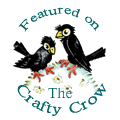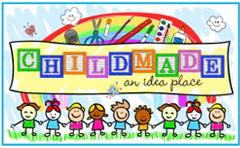I had a recipe from Helen Roney Sattler's Recipes for Art and Craft Materials, but I decided to check online, for other recipes too, just to make sure I had a good one. Almost all the recipes were the same (or so I thought) - 1 tablespoon of glue, 1 piece of bread with the crusts removed, and a drop of either dish soap, lemon juice, or glycerin (Sattler also added vinegar).
We removed the crust from 4 slices of bread, and tore them into little pieces in a bowl.
Then, we added in 4 tablespoons of glue, and 4 drops of lemon juice.

I didn't think the dough had much promise, and it certainly was not kid friendly - which I found odd, because the recipes were most often listed under fun-for-kid type headings.
I pressed on, just in case it got better with working, and added a few drops of food coloring to the clay.
I (the children refused to touch it) managed to flatten it out, on top of lotion covered wax paper, and cut a few heart shapes out - but it was not at all a pleasant process, and I have very little hope, that I'll be able to remove the hearts from the wax paper once they are dry.
Puzzled, I went back to check the recipes, in case I had made some mistake. That, was when I noticed not all the recipes called for tablespoons of glue. Some called for teaspoons (Martha's called for tablespoons). I decided to give the teaspoon method a try, and this time I switched to dish soap, instead of lemon juice.
It made all the difference. Our new batch of bread clay, was not sticky at all, and was quite easy for little hands to work.
Even my oldest enjoyed the pleasing popping sound the clay made, as it was blown from the straw - though he has no interest in the actual beads.
Our beads will need overnight to dry, and then can be sealed with clear fingernail polish (all the sites seem to agree on that point).
But, just for the record, the correct recipe for bread clay is...
- 1 piece of bread
- 1 teaspoon of white glue
- 1 drop of dish soap
- 1 or 2 drops of food coloring, or paint (optional)
It's great to be a homeschooler.








6 comments:
Interesting - you do have the most fascinating experiments. I finally discovered Evernote, and now it's under my "chemistry" tag :)
I'm really glad I mentioned my interest in unschooling, and my quest to see if it will work with Christianity, on my latest blog post. Ticia over at Adventures in Mommydom suggested I check out your blog. I took some time to check out your blog and I love the different activities I have seen, especially these experiments you do. I am now following your blog!
I am glad you got this figured out. I can't wait to see the finished beads!
That looks so fun. I've thought about making bread clay several times, but never quite done it.
This looks great :) We have to have gluten free bread in our house - I wonder if it would work with that? Hmmmm might give it a go!
hi, can anyone explain the science of this experiment? thanks a lot
Post a Comment